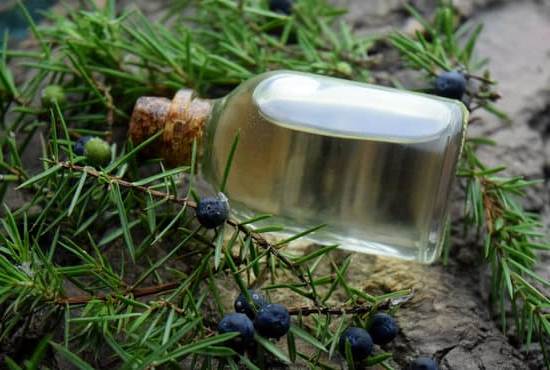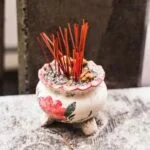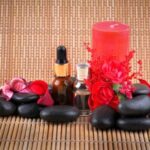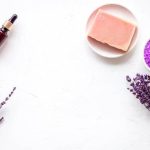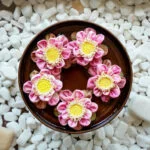Aromatherapy, a practice that has been used for centuries, harnesses the power of aromatic plants to promote healing and relaxation. By inhaling or topically applying essential oils derived from these plants, individuals can experience a wide range of physical and emotional benefits. From reducing stress and anxiety to relieving pain and promoting sleep, aromatherapy has been praised for its holistic approach to wellness.
The use of aromatherapy for healing is based on the idea that the scents we encounter can have a profound impact on our body and mind. Certain scents stimulate specific areas of our brain, triggering various physiological responses. For example, the smell of lavender has been shown to calm the nervous system and improve sleep quality, while citrus scents like lemon or orange can boost mood and create a sense of alertness.
Scientists have also conducted numerous studies exploring the efficacy of aromatherapy in addressing various health concerns. Research has shown promising results in using certain essential oils to alleviate symptoms associated with conditions such as headaches, nausea, inflammation, and even depression. As a result, aromatherapy is increasingly being integrated into conventional healthcare practices as a complementary therapy.
In this article, we will delve deeper into the world of aromatherapy, exploring its healing benefits and how it can be incorporated into our daily routines for improved well-being. We will also unveil an exclusive aromatherapy “He” recipe that blends powerful ingredients known for their healing properties. So let’s embark on this journey to cultivate wellness through the captivating scents of nature.
Understanding the Healing Benefits of Aromatherapy
Aromatherapy, the practice of using essential oils for therapeutic purposes, has gained popularity in recent years as a natural and holistic approach to healing and relaxation. This section will delve deeper into the healing benefits of aromatherapy, exploring its potential to positively impact our physical and emotional well-being.
The Therapeutic Potential of Aromatherapy
Aromatherapy works by harnessing the power of scent to promote wellness. When we inhale essential oils, the molecules travel through our olfactory system and stimulate specific areas in our brain that are responsible for emotions, memory, and hormonal balance. This direct connection between scent and brain activity is what gives aromatherapy its therapeutic potential.
Physical and Emotional Well-being
Certain scents have been found to have profound effects on both our physical and emotional health. For example, lavender is known for its calming properties and can help reduce stress and anxiety. Peppermint has been shown to have analgesic properties, making it effective in relieving headaches or muscle pain.
Furthermore, some essential oils like tea tree oil possess antimicrobial properties that can aid in fighting off bacteria or infections. Eucalyptus oil is often used for respiratory issues due to its ability to clear congestion and promote easier breathing.
The Scientific Evidence
While aromatherapists have long praised the healing benefits of aromatherapy, scientific research has started to support these claims as well. Numerous studies have demonstrated positive results when using essential oils for specific conditions.
For instance, a study published in the Journal of Clinical Psychiatry found that inhalation of lavender oil reduced levels of anxiety in patients with generalized anxiety disorder. Another study conducted at Akita University Graduate School of Medicine in Japan showed that lemon oil vapor can alleviate pregnancy-related nausea feelings significantly.
These scientific findings help solidify aromatherapy as a legitimate and evidence-based healing practice, making it a viable option for those seeking natural alternatives to improve their health and well-being.
By understanding the therapeutic potential of aromatherapy and how certain scents can positively impact our physical and emotional well-being, individuals can make informed choices when incorporating aromatherapy into their daily routines. Next, we will explore the specific healing benefits of the “He” recipe and understand how its ingredients work harmoniously together to promote overall wellness.
Aromatherapy He Recipe
In this section, we will delve into the specific ingredients used in the aromatherapy “He” recipe and explore their individual healing properties. Each ingredient has been carefully selected for its unique benefits and the way it contributes to overall wellness.
- Lavender Essential Oil Lavender essential oil is a popular ingredient in aromatherapy due to its calming and soothing properties. It has been shown to reduce anxiety, promote better sleep, and alleviate stress. Lavender oil also possesses anti-inflammatory effects, making it beneficial for relieving pain and promoting healing.
- Peppermint Essential Oil Peppermint essential oil is known for its invigorating scent and cooling sensation. It can help uplift the mood, improve focus and concentration, as well as relieve headaches and nausea. Its energizing properties make it an excellent addition to the aromatherapy “He” recipe for a refreshing and revitalizing experience.
- Eucalyptus Essential Oil Eucalyptus essential oil is often associated with respiratory health due to its ability to open up airways and relieve congestion. It has antimicrobial properties that can support the immune system and aid in fighting off infections. Incorporating eucalyptus oil in the “He” recipe can promote respiratory well-being and boost overall vitality.
- Rosemary Essential Oil Rosemary essential oil is known for its stimulating properties that can enhance mental clarity, memory retention, and alertness. It also has antioxidant effects that combat free radicals in the body, protecting cells from damage. The presence of rosemary oil in the aromatherapy “He” recipe adds an element of focus and rejuvenation.
- Carrier Oil (such as jojoba or sweet almond oil)
Carrier oils are a necessary component of any aromatherapy blend as they dilute the concentrated essential oils before application on the skin. They help to evenly distribute the essential oils and prevent skin irritation or sensitization. Jojoba oil and sweet almond oil are commonly used carrier oils due to their light texture and beneficial properties for the skin.
By combining these carefully selected ingredients, the aromatherapy “He” recipe aims to promote overall wellness by providing relaxation, mental clarity, respiratory support, and pain relief. Each ingredient plays a specific role in enhancing the therapeutic effects of the blend, creating a harmonious synergy that supports healing and balance.
Step-by-Step Guide to Making Your Own Aromatherapy He Recipe
Creating your own aromatherapy “He” recipe at home is a simple and rewarding process. By following a step-by-step guide, you can easily make your own personalized blend of essential oils that promotes healing and relaxation. Here is a detailed overview of the recipe’s preparation process to help you get started.
Step 1: Gather Your Ingredients
Before beginning, gather all the necessary ingredients for your aromatherapy “He” recipe. You will need high-quality essential oils such as lavender, eucalyptus, and peppermint, as well as a carrier oil like jojoba or almond oil. Additionally, you may want to include other ingredients such as dried herbs or flowers for added fragrance and therapeutic benefits.
Step 2: Prepare Your Workspace
Create a clean and organized workspace where you can safely mix your ingredients. Make sure to have all the tools you need, such as glass dropper bottles or rollerball containers for storage. It is also important to wash your hands thoroughly before handling the oils to maintain cleanliness.
Step 3: Measure and Mix
Using a measuring tool, carefully measure out the desired amount of each essential oil according to your recipe. The exact measurements may vary depending on personal preference and skin sensitivity, so adjust accordingly. Once measured, pour the essential oils into a glass container and gently mix them together using a clean stir stick or pipette.
Step 4: Dilute with Carrier Oil
To ensure safety and proper usage, dilute the essential oil blend with a carrier oil before applying it to the skin. The general guideline is to use about 2-5% dilution for most adults, which means adding approximately 10-15 drops of essential oil per ounce of carrier oil. Stir well until thoroughly blended.
Step 5: Store Properly
Transfer the blended aromatherapy “He” mixture into dark glass bottles or rollerball containers for storage. Dark glass helps protect the oils from light and heat, preserving their potency. Label each container with the recipe name and date of creation to keep track of freshness.
By following these simple steps, you can create your own customized aromatherapy “He” recipe that suits your individual needs. Remember to store your blend in a cool, dark place away from direct sunlight to extend its shelf life. Enjoy the process of experimentation and discovery as you explore the wonderful world of aromatherapy for healing and relaxation.
Safety Precautions and Usage Guidelines
Aromatherapy can be a powerful tool for healing and relaxation, but it is important to prioritize safety when using essential oils. While essential oils are natural substances derived from plants, they still require proper usage and precautions to avoid any potential risks or adverse reactions.
One of the most important safety considerations when using aromatherapy is dilution. Essential oils are highly concentrated substances, and they should never be applied directly to the skin without proper dilution.
It is recommended to use a carrier oil, such as jojoba oil or sweet almond oil, to dilute essential oils before applying them topically. The general rule of thumb is to have a 2% dilution rate, which means adding approximately 12 drops of essential oil per ounce of carrier oil.
It is also crucial to perform a patch test before using any new essential oil or blend. Even if you have used an essential oil before without any issues, each individual may react differently. Apply a small amount of the diluted essential oil on a small area of your skin and wait for at least 24 hours. If you experience any redness, itching, or irritation, discontinue use immediately.
Lastly, keep in mind that certain essential oils may not be suitable for everyone. Some oils can cause sensitivities or allergic reactions in certain individuals. Additionally, some essential oils are not recommended for use during pregnancy or with specific health conditions. Always consult with a qualified aromatherapist or healthcare professional before using any new essential oil or blend.
By following these safety precautions and guidelines for usage, you can enjoy the benefits of aromatherapy while minimizing any potential risks. Remember that less is more when it comes to using essential oils – start with small amounts and gradually increase if necessary. And most importantly, always listen to your body and its reactions when using aromatherapy.
| Safety Precautions | Usage Guidelines |
|---|---|
| Dilute essential oils before applying topically | Perform a patch test before using new essential oil or blend |
| Avoid applying undiluted essential oils directly to the skin | Consult with a qualified aromatherapist or healthcare professional |
| Avoid contact with eyes, nose, and sensitive areas | Start with small amounts and increase gradually if necessary |
| Avoid ingesting essential oils unless under professional guidance | Listen to your body and its reactions when using aromatherapy |
Personal Experiences
Aromatherapy enthusiasts across the globe have experienced the healing and relaxation benefits of the aromatherapy “He” recipe firsthand. Their personal stories and testimonials serve as a testament to the effectiveness of this powerful blend in promoting overall well-being.
One enthusiast, Sara, shares her experience with the aromatherapy “He” recipe: “I have been struggling with anxiety for years, and incorporating aromatherapy into my daily routine has made a significant difference. The combination of lavender, chamomile, and frankincense in the ‘He’ recipe creates a calming and soothing effect that instantly relaxes my mind and body. I use it before bedtime or during moments of high stress, and it helps me find balance and peace within myself”.
Another testimonial comes from Mark, who suffers from chronic pain due to arthritis. He says, “The ‘He’ blend has been a game-changer for me. The eucalyptus and peppermint oils provide a cooling sensation that alleviates my joint pain and reduces inflammation. I apply it topically on affected areas whenever I experience flare-ups, and it provides immediate relief. Plus, the scent is so refreshing-it feels like taking a deep breath of fresh air”.
These personal experiences resonate with many individuals seeking natural alternatives for healing and relaxation. The therapeutic properties of each ingredient in the aromatherapy “He” recipe work harmoniously together to address various physical and emotional concerns. From reducing stress to relieving pain, these testimonials highlight how aromatherapy can make a positive impact on one’s overall well-being.
As you embark on your own aromatherapy journey, remember that everyone’s experience may vary. It is important to find what works best for you by experimenting with different essential oil blends and finding your preferred scents. Aromatherapy offers a holistic approach to wellness, providing not only physical benefits but also emotional support-making it an excellent addition to your self-care routine.
Exploring Other Aromatherapy Recipes for Healing
Aromatherapy offers a wide range of healing benefits, and there are numerous recipes that can be used to address specific health concerns. In addition to the aromatherapy “He” recipe discussed earlier, there are many other blends that can promote healing and well-being. Here are a few popular aromatherapy recipes to explore:
1. Calming Lavender Blend:
This blend is perfect for promoting relaxation and relieving stress. It combines 10 drops of lavender essential oil, 5 drops of bergamot essential oil, and 5 drops of clary sage essential oil. Lavender is known for its calming properties, while bergamot adds a citrusy uplift to the blend. Clary sage helps to balance emotions and reduce anxiety.
2. Energizing Citrus Mix:
If you’re in need of an energy boost, this blend can help invigorate your senses. Combine 10 drops of grapefruit essential oil, 8 drops of lemon essential oil, and 4 drops of peppermint essential oil. Grapefruit and lemon oils provide a refreshing citrus aroma that can help uplift your mood and increase focus. Peppermint adds a cool and invigorating element to the mix.
3. Headache Relief Balm:
For those who suffer from headaches or migraines, this blend can offer relief. Create a balm by melting 4 tablespoons of coconut oil with 20 drops of peppermint essential oil. Once melted and mixed well, pour the mixture into a small container for easy application. Apply the balm to your temples or forehead whenever you have a headache for soothing relief.
These are just a few examples of the many aromatherapy recipes available for healing purposes. Each blend has its own unique combination of ingredients that target specific health concerns or promote overall wellness. As with any aromatherapy recipe, it’s important to source high-quality ingredients and follow proper usage guidelines for optimal results.
Experimenting with different blends allows you to discover the scents and combinations that work best for you. It’s a personal journey of self-care and wellbeing, and aromatherapy provides a wide range of options to choose from. Whether you’re looking to relax, boost your energy, or target specific health issues, there is an aromatherapy recipe out there that can meet your needs. Happy blending.
Conclusion
In conclusion, aromatherapy offers a powerful tool for cultivating wellness and promoting overall well-being. Through the use of carefully selected scents and healing ingredients, aromatherapy has the potential to positively impact our physical and emotional health. The “He” recipe discussed in this article is just one example of how aromatherapy can be used to enhance healing and relaxation.
By understanding the specific benefits of each ingredient, we can harness the power of nature’s healing properties. The combination of these ingredients in the “He” recipe works harmoniously together to promote wellness on multiple levels. Whether it’s relieving stress, reducing pain, improving sleep quality, or enhancing mood, aromatherapy has shown scientific evidence supporting its effectiveness.
It is important to approach aromatherapy with caution and safety. As with any natural remedy, there may be potential risks or contraindications associated with certain ingredients. It is essential to follow proper usage guidelines and dosage recommendations to ensure a safe and beneficial experience.
Overall, incorporating aromatherapy into our daily routines can have a profound impact on our health and well-being. By taking the time to prioritize self-care and holistic practices like aromatherapy, we can cultivate wellness from within. So why not give it a try? Explore different recipes, experiment with blends, and begin your journey towards improved health and relaxation through the power of scent.
Frequently Asked Questions
How to mix essential oils for hair growth and thickness recipe?
Mixing essential oils for hair growth and thickness can be a simple process. Firstly, you need to choose the essential oils that are known to promote hair growth, such as rosemary, lavender, peppermint, or cedarwood. Once you have decided on the oils, you will need a carrier oil like coconut oil or jojoba oil. To create the mixture, start by adding a carrier oil of your choice into a clean and empty bottle.
Then add a few drops of each essential oil to the carrier oil in the desired proportions. The exact number of drops will vary depending on personal preference and hair length, but typically 3-5 drops per ounce of carrier oil is a good starting point. Gently shake the bottle to ensure proper mixing and store it in a cool and dark place. Before each use, remember to give it a quick shake again before applying it directly to your scalp or adding it to your shampoo or conditioner.
How do you make homemade aromatherapy?
Making homemade aromatherapy products can be a wonderful way to personalize your self-care routine and enjoy the benefits of essential oils at home. There are various ways to incorporate aromatherapy into your daily life, such as through diffusers, massage oils, sprays, or bath salts. To make homemade aromatherapy products, you will need high-quality essential oils of your choice in scents that suit your needs or preferences.
Start by selecting a base ingredient for your chosen product; for example, if making massage oil or bath salts, consider using carrier oils like sweet almond or jojoba oil along with Epsom salt for bath salts. From there, add a few drops of essential oil into the base ingredient(s) until you achieve the desired scent strength – typically 10-20 drops per ounce is recommended but adjust according to personal preference and aroma intensity desired. Mix well and store in appropriate containers away from direct sunlight or heat sources.
What are the ingredients in aromatherapy?
Aromatherapy products generally contain a range of ingredients depending on the purpose and type of product being created. The primary ingredient in aromatherapy is essential oils, which are derived from plants through various extraction methods. Essential oil blends can contain oils like lavender, eucalyptus, tea tree, peppermint, or chamomile, among many others. In addition to essential oils, carrier oils are often used to dilute the concentration and provide nourishment for the skin.
Commonly utilized carrier oils include coconut oil, jojoba oil, almond oil, or grapeseed oil. Some aromatherapy products may also include additional ingredients such as Epsom salt for bath salts or natural preservatives to extend the shelf life of the product. It’s important to thoroughly research and understand the specific ingredients you choose to ensure they are safe and suitable for your intended use.

Are you looking for a natural way to improve your health and wellbeing?
If so, aromatherapy may be the answer for you.

